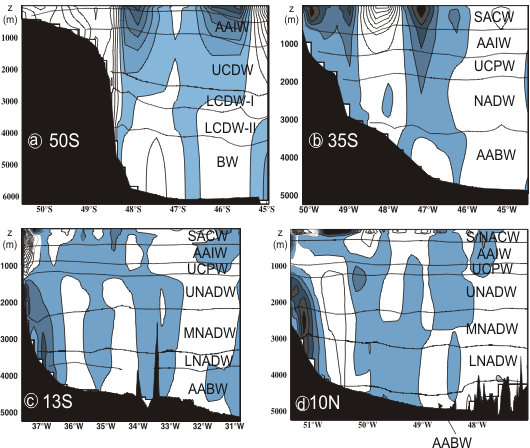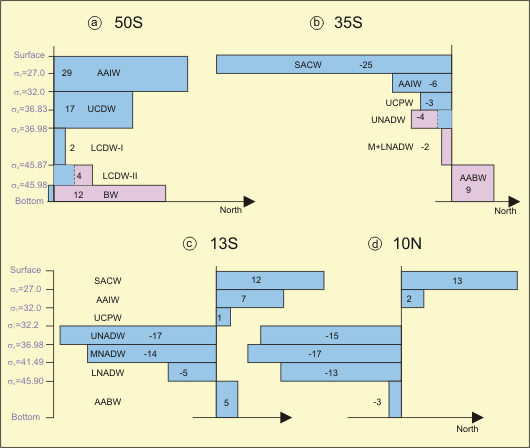
Figure 7: Alongshore velocities across the southern end of A17 (50°S) and the three transverse sections (35°S, 13°S, 10°N). Regions of southward velocities are coloured. The contouring interval is 5 cm/s in (a) and 10 cm/s in (b), (c), and (d).
The lateral flow structure (Fig 7) reveals boundary flows of widths 100 km-200 km in the upper ocean at 35°S, 13°S and 10°N, and ~300 km at 50°S. Boundary flows are wider and shifted seaward in the bottom layers. Except at 13°S, strong recirculations exist offshore of the boundary flows: The Falkland Return Current at 50°S, a return Brazil Current at 35°S, and a feature of higher vertical mode at 10°N, probably related to the strong temporal variability of the region (e.g. Johns et al., 1993). Due to the recirculations, the net alongshore transports inshore of A17 generally underestimate the boundary flows, but the distribution patterns provided by those estimates (used in the previous sections of this poster) are weakly affected.
